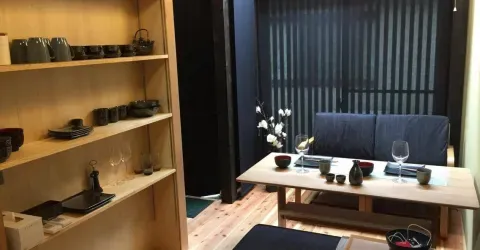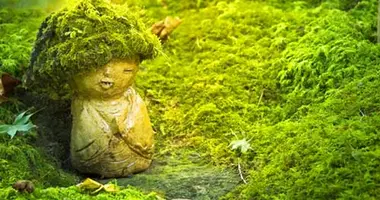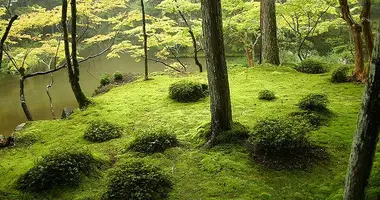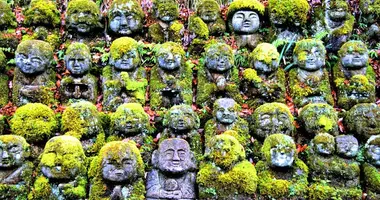Daigoji Temple 醍醐寺
Located in southeast Kyoto Daigoji Temple was founded by Shobo in 874. Now a World Heritage Site the temple is a great place to see the changing of the leaves.
Daigoji
Founded in 874 by the Buddhist monk Shobo aka Rigen Daishi (832-909), Daigoji Temple began its existence as a hermitage on the top of the Kamidaigo mountain.
It is there that Shobo discovered a well that contained "spiritual water." Thanks to the financial and spiritual support of various emperors, the temple grew and prospered.
Yakushi Hall was constructed in 907, Sakyamuni Hall was built in 926, and a five-story pagoda was completed in 951.
"Daigo" refers to the five distinct periods of the Buddha's teaching in India, which were compared to the five types of milk produced there, the highest form being "daigo" - the ultimate, purest essence of milk.
Daigoji is the main temple of Shingon school, Ono sect, of Japanese Buddhism. Daigoji has also played an important role in more temporal things as well. Minamoto Toshifusa, a direct descendant of one of the heads of Daigoji, seized power from the Fujiwara family during the late Heian Period. This guaranteed prosperity for the temple.
Fire, however, during the Onin War (1467–1477) destroyed everything in the complex except for the pagoda.
Toyotomi Hideyoshi was supposedly attracted to the temple by the beauty of its cherry trees and was persuaded by the abbot of the day to restore it, which he did in his characteristic opulent style.
Today Daigoji is a World Heritage Site, primarily because of the treasures within. Sanboin, for example, is an Imperial temple. Its Karamon gate was opened only when Imperial messengers visited. Within this is the Sanboin Garden, which is a National Treasure, and has 800 rocks.
Next is the Gojonoto, or five-story pagoda, which was completed in 951 and is the oldest of its type in Japan and 38 meters tall. Third, the impressive Niomon Gate was, following a fire, rebuilt in 1605.
Finally is the Reihokan Hall, which contains 10 national treasures, and 50 Important Cultural Properties. Reihokan is open from October 1 December 3, and admission is 600 yen.
Daigoji is divided into two parts: kami and shimo or upper and lower. Most visitors stay at the lower part where the most famous buildings and the pagoda are located but it is also rewarding to walk up (about an hour) to Kami Daigo to admire the historic buildings set in peaceful surroundings of trees and bamboo groves.
These include the Nyonindo (Hall for Women) where women used in worship in early times when they were banned from climbing holy mountains. At the top is the Seiryu Gongengu, a Shinto shrine dating from 1434 and the sacred spring discovered by Shobo. The Junteido contains an image of Kannon, the Goddess of Mercy, and can be entered. The Yakushido dates from 1121 and is a National Treasure, containing an image of the Yakushi Nyorai, believed to have been carved in 907. At the top of the 400m-high hill are three more buildings: the Godaido, the Nyoirindo and Kaisando, the latter two with beautiful cypress-bark roofs, dating from the end of the 17th century.
Address, timetable & access
Daigoji Temple
Address
22 Higashioji-cho, Daigo, Fushimi-ku
601-1325
Japan
Phone
+81 (0)75 571 0002Timetable
Open from 9 am - 4:40 pm.Price
Entrance: 600 yen. Reihokan: 600 yen. Shimogaran: 600 yenAccess
Ride the Tozai Subway Line of the Kyoto subway system to Daigo Station, and walk east for about 10 minutes. The terminus of the Tozai subway line is Rokujizo which intersects with Rokujizo Station on the JR Nara Line and the Rokujizo Station on the Keihan Line to Uji.
There are Keihan buses, numbers #22, #22A and #24 from Yamashina Keihan Station and #22 and #22A from Rokujizo Station.Website
https://www.daigoji.or.jp/index_e.html































